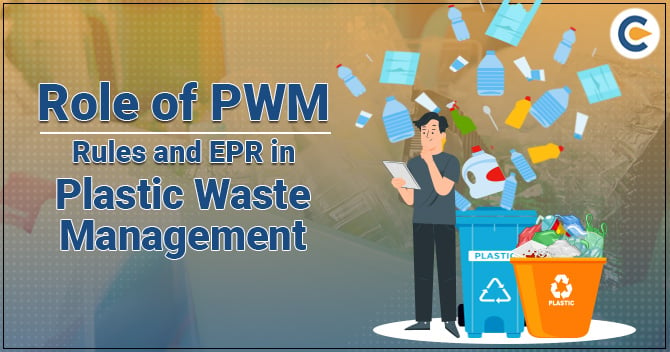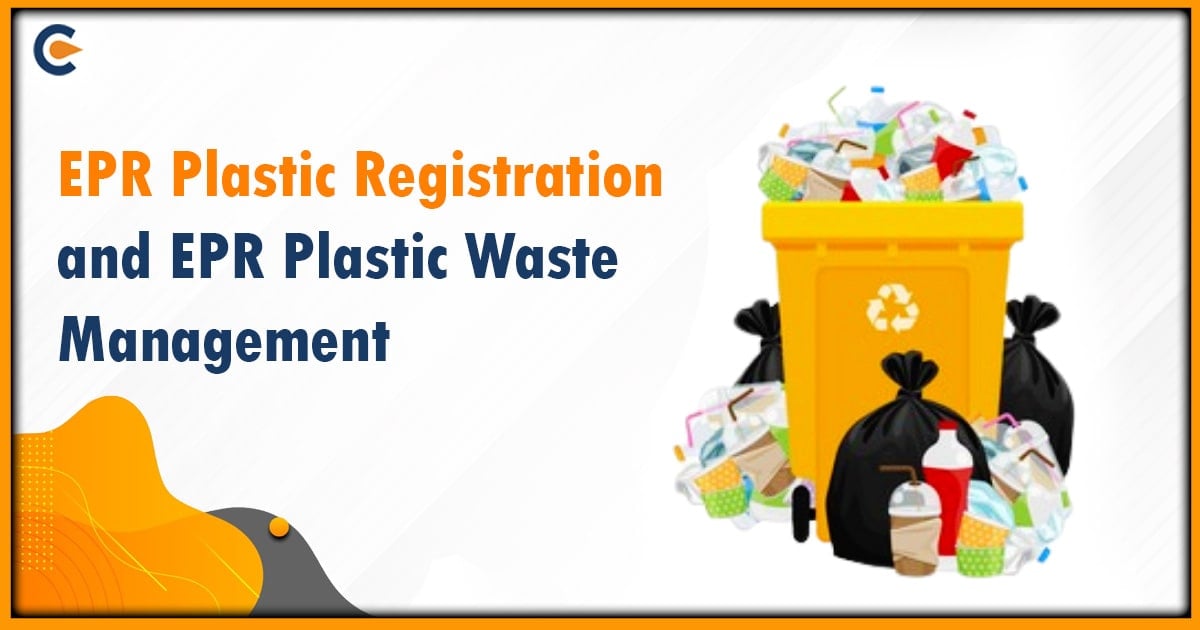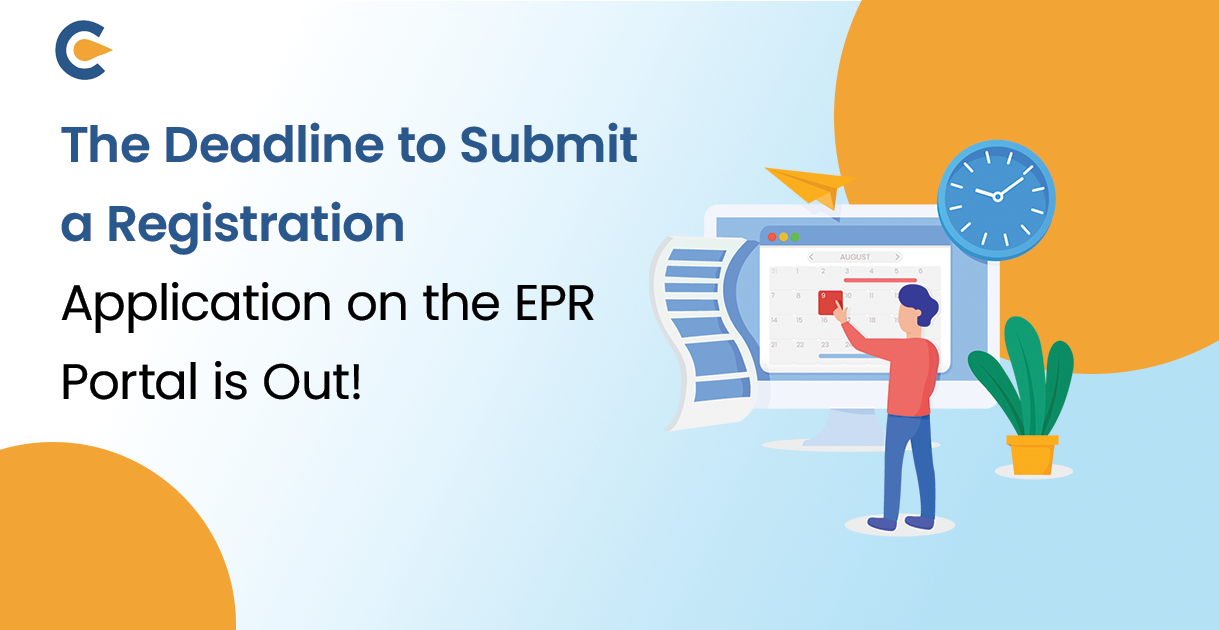Extended Producer Responsibility (EPR) is a mechanism that helps in decreasing the environmental impact of a plastic product and its packaging. In this article, we will explore the role of PWM Rules and EPR in plastic waste management.
Extended Producer Responsibility in minimizing Plastic waste
EPR policy briefs about all forms of management from recycling to end-of-life disposal, efficiently leaving out the most-approved option of plastic waste minimization.
Also, The PWM rules, 2016, direct the generators of plastic waste to take steps to minimize the generation of plastic waste.
The essential feature for managing the plastic waste through EPR is to motivate producers, importers, and brand owners who are responsible for plastic waste-
- To minimize the number of plastics they introduce in the market through their products.
- The brand owners should be encouraged to slowly reduce the number of plastics they introduce in the market by adopting alternatives such as paper, glass, metals, etc.
PWM Rules (amendment) rules for Extended Producer Responsibility-Plastics
For the management of plastic waste in India, The Union Ministry of Environment, Forest, and Climate Change[1] has released a draft EPR on October 6, 2021. Also, Non-profit Centre based in Delhi for Science and Environment has sent its propositions and recommendations to the Ministry of Environment, Forest, and Climate Change, by outlining the key achievements and issues with the draft policy on Extended Producer Responsibility of plastics. Also, the Plastic Waste Management Amendment Rule, 2021, announced by the Ministry bans specific single-use items which have “less utility and high clutter potential” by 2022.
In the initial stage, the EPR for the last five years has failed to translate policy into action. The reason was the lack of responsibility from the producers and the lack of imposition from the authorities. EPR helps in advancing the economy and encouraging the principle of “Polluter Pays” where the manufacturer is responsible for the life cycle of the product. The recent suggested rules have managed to take one small step in the right direction.
Categories of Packaging covered under Extended Producer Responsibility-
The producers and brand owners are charged with significant responsibility for the treatment/disposal of plastic waste. Plastic waste covers three categories of packaging –
Rigid plastic packaging-These kind of packaging involves the use of plastic materials such as polypropylene, High-density polyethylene, and polyethylene for the packaging of bottles and containers. These packaging’s are durable and lightweight.
Flexible plastic packaging-This packaging is lightweight packets or bags sealed using heat or pressure. Packaging like- plastic bags with Ziplock, laminated printed pouches, travel kit bags. As it justifies its name, the flexible plastic packs can be customized with ease. Also, the costs involved in these bags are low but offer basic protection from compression.
Multiple layers with different types of plastic–Multiple layer Plastics are plastics that have several thin sheets of materials that are attached and after attachment, it is difficult for anyone to separate.
Also, The Ministry of Environment has specified strategies to determine the level of responsibility, unbending the targets in incremental steps for both producers and brand owners. The Producers of plastic waste will also be permitted to deal in Extended Producer Responsibility certificates.
What targets are set for the companies to collect the plastics?
As per the rules, the Companies will have to collect at least-
- In 2021-22, the target is for 35% collection of waste
- In 2022-23, the target is for 70% collection of waste
- By 2024, the target is for 100% collection of waste
Further, From the year 2024, at least50 % of the rigid plastic will have to be recycled by the companies and also 30% of category 2 and 3 plastics will have to be recycled.
Every year higher targets are progressively set i.e. after 2026-27, for Category 1 80 % and for2 and 3 categories 60% need to be recycled.
There are similar targets, with slight changes, for companies that use packaging materials or import them.
Essential Steps by the authority to improve Extender Producer Responsibility-Plastics
EPR Certificates- If companies have not met out their obligations, the companies on a Case-to-Case basis be permitted to purchase ERP certificates.
Also, The CPCB will develop a procedure for such exchanges on a centralized online portal.
Non-Compliance: An environmental compensation will be levied in case of non-compliances. However, the rules do not specify the amount of compensation.
Fine: If the companies that do not fulfill their targets or do not buy many ERP credits to meet their respective target must pay a fine.
Note-The amount collected by the way of funds and fine will be transferred in an escrow account and can be used in collection and recycling and obsolescence disposal of non-recycled/ obsolescence disposal of plastic packaging waste on which the environmental compensation is levied.
Also, the manufacture of a range of plastic products will be banned from July 2022.
Conclusion
In a nutshell, PWM rules compel producers of plastic packaging material to collect all their products and ensure that the minimum percentage as prescribed above shall be recycled and used in further supply. Also, in Extended Producer Responsibility, the producers of plastic packaging are obliged to declare to the government how much plastic is produced annually.
Read our Article:Legal Aspects of Plastic Raw Material Manufacturing Business











